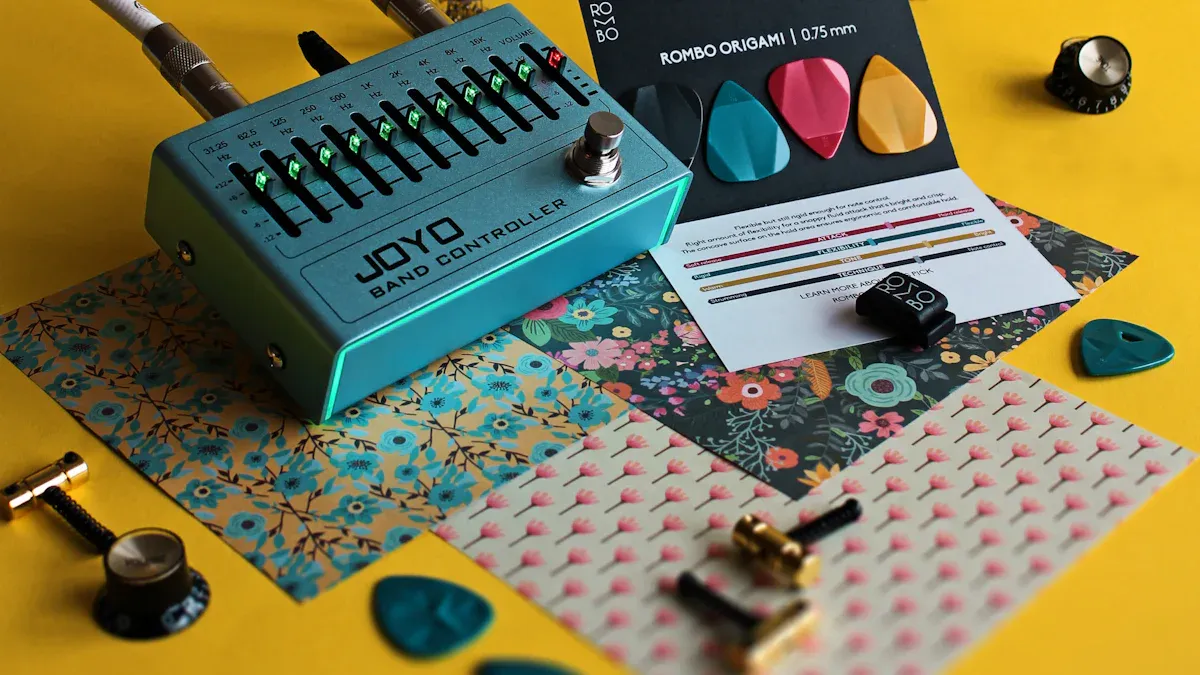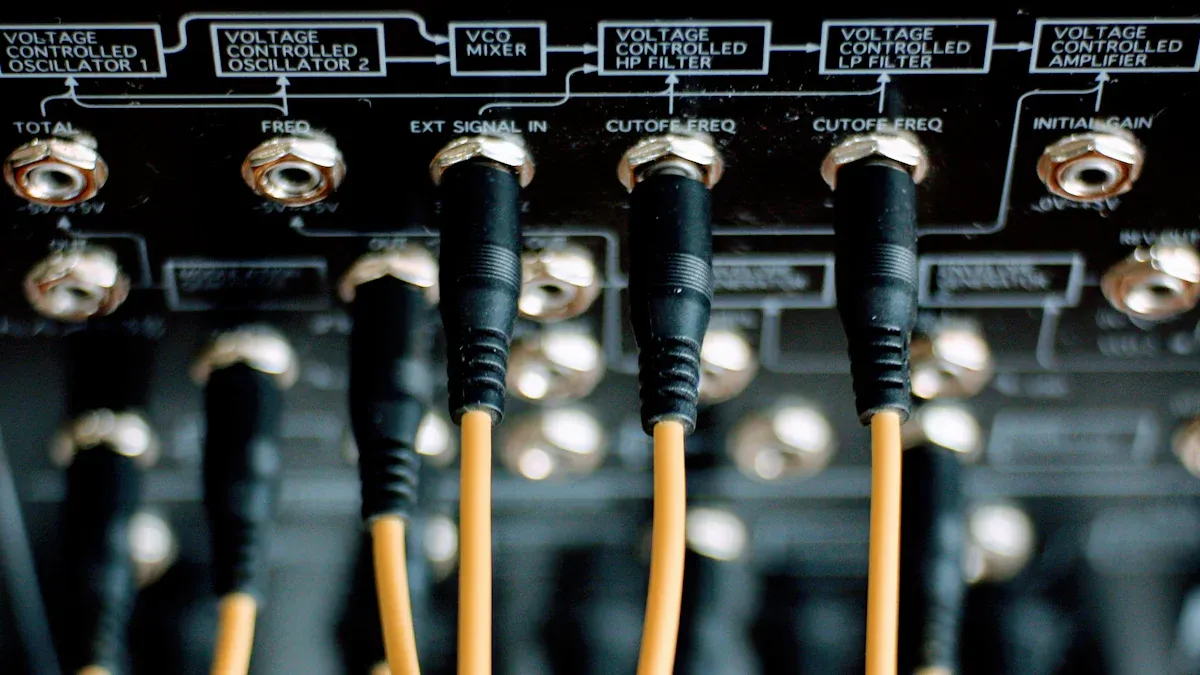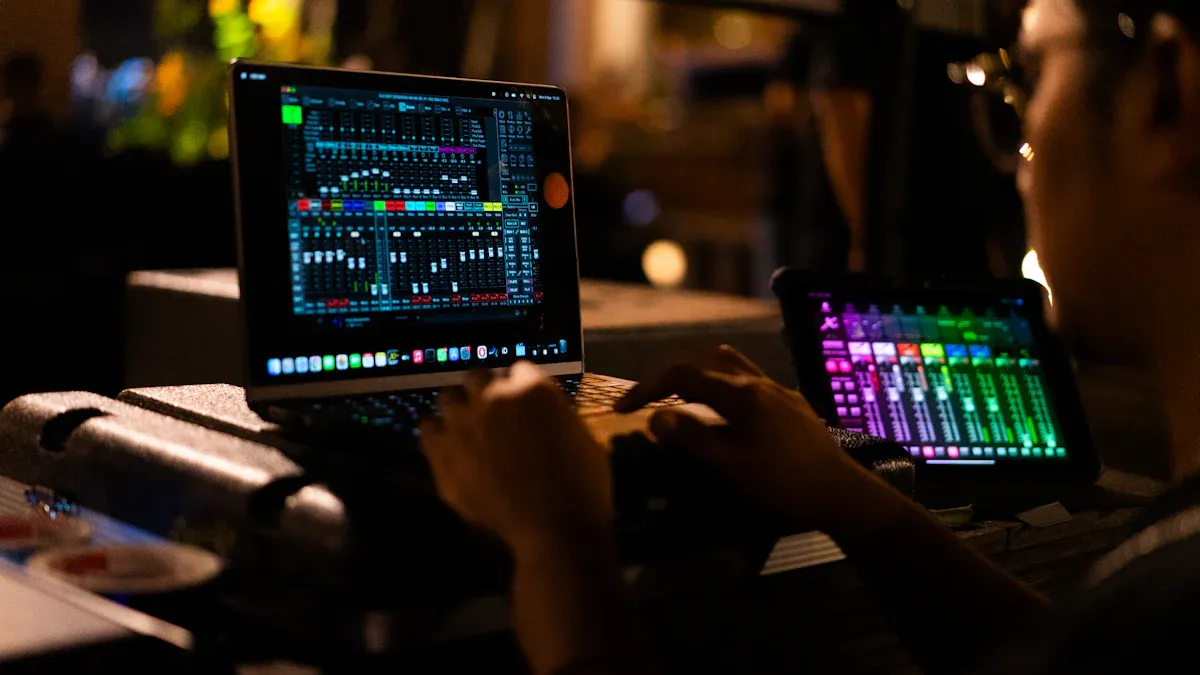What is an IC Sample Rate Converter and How Does It Work

An IC sample rate converter is a specialized integrated circuit designed to adjust the sampling rate of digital signals. This adjustment ensures that signals with different sampling rates can work seamlessly together.
Why does this matter? Consider the growing demand for high-quality audio and video processing.
The market for these ICs is projected to grow from $1.2 billion in 2023 to $2.8 billion by 2032, with a 9.5% annual growth rate.
Consumer electronics, like smartphones and tablets, drive this demand due to their need for superior audio.
The rise of 5G technology also increases the need for efficient signal processing solutions.
These trends highlight why you encounter IC sample rate converters in many modern devices.
Key Takeaways
IC sample rate converters change digital signals so devices with different rates can work together.
They are important in audio and phones, stopping sound glitches and timing problems.
By using methods like interpolation and decimation, they keep the signal clear during changes.
Good converters handle many sample rates, making devices more compatible.
Energy-saving designs make these converters great for gadgets like phones and tablets.
Why Sample Rate Conversion is Needed

Challenges of mismatched sample rates in digital systems
Digital systems often operate at different sample rates, which can create significant challenges. For example, when two devices with incompatible sample rates attempt to communicate, the result is often distorted or unusable data. This issue is especially common in audio systems where one device might use a 44.1 kHz sample rate while another uses 48 kHz. Without proper conversion, the mismatch can lead to audio glitches, timing errors, or complete signal failure.
In telecommunications, mismatched sample rates can disrupt real-time communication. Imagine a video call where the audio lags or cuts out because the devices involved cannot synchronize their signals. These problems highlight the need for a solution that bridges the gap between different sample rates.
Importance of sample rate conversion in audio and telecommunications
Sample rate conversion plays a vital role in ensuring smooth operation across various industries. In audio, it allows devices like microphones, speakers, and recording equipment to work together seamlessly. Professional audio environments, such as recording studios, rely on accurate synchronization of signals from multiple sources. This synchronization ensures that recordings and mixes maintain their quality and timing.
In telecommunications, sample rate conversion enhances the quality of real-time communication. It ensures that audio streams in VoIP calls or video conferencing systems remain clear and synchronized. With the increasing number of digital devices, such as smartphones and smart speakers, operating at different sample rates, the demand for solutions like the IC SAMPLE RATE CONVERTER continues to grow.
Key applications of sample rate conversion include:
Synchronizing audio signals in professional recording setups.
Improving the clarity of VoIP and video conferencing systems.
Enabling compatibility between consumer electronics with varying sample rates.
Benefits of sample rate conversion for system compatibility
The primary benefit of sample rate conversion is improved system compatibility. By converting signals to a common sample rate, devices can communicate effectively without errors or distortions. This compatibility is crucial in industries where precision and reliability are essential.
For instance, in servohydraulic systems, increasing the sample rate enhances control fidelity up to a certain point. However, exceeding this threshold can cause performance issues due to numerical errors like coefficient quantization. This demonstrates the importance of maintaining an optimal sample rate for system performance.
An IC SAMPLE RATE CONVERTER simplifies this process by automating the conversion. It ensures that signals are processed accurately and efficiently, reducing the risk of errors. This capability makes it an indispensable component in modern digital systems.
How an IC Sample Rate Converter Works

Input: Receiving digital signals at one sample rate
An IC SAMPLE RATE CONVERTER begins its operation by receiving digital signals at a specific sample rate. These signals represent data points collected at regular intervals, such as audio or communication data. For example, a microphone might produce signals at a 44.1 kHz sample rate, while a playback device might require a 48 kHz sample rate. The converter acts as a bridge, preparing the incoming signal for processing.
The input stage is crucial because it determines the quality of the data entering the system. If the incoming signal is noisy or distorted, the conversion process may amplify these issues. To address this, many IC SAMPLE RATE CONVERTERS include pre-processing features like noise reduction or signal conditioning. These features ensure that the data is clean and ready for accurate conversion.
Processing: Techniques like interpolation and decimation
Once the IC SAMPLE RATE CONVERTER receives the signal, it uses advanced techniques to adjust the sample rate. Two common methods are interpolation and decimation.
Interpolation: This technique increases the sample rate by adding new data points between existing ones. It uses mathematical algorithms to estimate the values of these new points, ensuring the signal remains smooth and accurate.
Decimation: This method reduces the sample rate by removing data points. It applies filtering to prevent aliasing, which can distort the signal during downsampling.
These techniques work together to modify the signal without compromising its integrity. To better understand this process, consider the following diagrams:
Diagram | Description |
|---|---|
This diagram illustrates a typical Digital Upconverter (DUC) module, which includes components like interpolation, filtering, frequency upconversion, and carrier combining. | |
This diagram depicts a typical Digital Downconverter (DDC) module, detailing components such as carrier selection, frequency downconversion, filtering, and decimation. |
These diagrams highlight the complexity of the processing stage. They show how the converter uses filtering and frequency adjustments to maintain signal quality during rate changes.
Output: Delivering signals at the desired sample rate
After processing, the IC SAMPLE RATE CONVERTER delivers the signal at the desired sample rate. This output stage ensures the signal is compatible with the target device or system. For instance, if you’re using a recording studio setup, the converter might adjust the signal to match the sample rate of your mixing console.
The output signal must retain its original characteristics, such as clarity and timing. High-quality IC SAMPLE RATE CONVERTERS achieve this by minimizing errors during conversion. They use precision algorithms and efficient hardware to deliver accurate results.
By completing the input, processing, and output stages, the IC SAMPLE RATE CONVERTER ensures seamless communication between devices with different sample rates. This capability makes it an essential component in modern digital systems.
Key Features of IC Sample Rate Converters
Supported sample rates and ranges
An IC SAMPLE RATE CONVERTER supports a wide range of sampling rates to meet the needs of various applications. These devices handle both low and high sampling rates, making them versatile for different industries. For example, they can process audio signals at 44.1 kHz for music playback or manage higher rates like 192 kHz for professional recording.
The flexibility in supported ranges ensures compatibility across devices. Whether you're working with consumer electronics or advanced systems like LiDAR, these converters adapt to the required rates. This adaptability reduces the need for additional hardware, simplifying system design.
Precision and accuracy in conversion
Precision and accuracy are critical for maintaining signal quality during conversion. High-performance converters achieve this by minimizing errors and distortions. Metrics like signal-to-noise ratio (SNR) and dynamic range (DR) reflect their ability to deliver clean and accurate signals.
Performance Metric | Importance |
|---|---|
Signal-to-noise ratio (SNR) | Ensures the desired signal stands out from background noise. |
Dynamic range (DR) | Measures the range of input signals that can be accurately converted. |
Total harmonic distortion (THD) | Reduces unwanted distortions in the output signal. |
Alias rejection | Prevents aliasing, preserving the integrity of the signal. |
These features ensure that the output matches the original signal's quality, even after significant rate changes.
Performance metrics and efficiency
Efficiency plays a vital role in modern converters. Low power consumption and high-speed processing make these devices suitable for portable and energy-sensitive applications. Advanced features like internal PLLs (Phase-Locked Loops) and integrated VCOs (Voltage-Controlled Oscillators) enhance performance while maintaining efficiency.
Feature | Specification |
|---|---|
Power Consumption | Low |
Sampling Rate | High |
Resolution | 12-bit |
Full-Power Input Bandwidth | |
SerDes Baud Rates | Up to 17.16Gbps |
These specifications highlight the balance between performance and energy efficiency. Whether you're designing for automotive systems or telecommunications, these converters deliver reliable results without excessive power usage.
Applications of IC Sample Rate Converters
Use in audio systems (e.g., recording studios, playback devices)
You encounter IC SAMPLE RATE CONVERTERS frequently in audio systems. These converters ensure seamless communication between devices with different sample rates. For example, in recording studios, they synchronize signals from microphones, mixing consoles, and playback devices. This synchronization prevents timing errors and maintains audio clarity during production.
Playback devices also benefit from these converters. Whether you're listening to music on a high-fidelity speaker or streaming audio on your smartphone, the converter adjusts the sample rate to match the device's requirements. This adjustment ensures that the audio remains smooth and distortion-free.
Role in telecommunications (e.g., data transmission, signal processing)
Telecommunications rely heavily on IC SAMPLE RATE CONVERTERS for efficient data transmission and signal processing. These converters play a key role in maintaining the quality of audio and video streams during VoIP calls and video conferencing. They adjust sample rates to ensure signals remain synchronized, reducing lag and improving clarity.
In data transmission, these converters help process signals accurately across networks. For example, they enable real-time communication in 5G systems by ensuring compatibility between devices with varying sample rates. This capability is essential for delivering high-speed, reliable connections.
Integration in consumer electronics (e.g., smartphones, TVs)
Consumer electronics like smartphones, TVs, and tablets integrate IC SAMPLE RATE CONVERTERS to enhance user experiences. In smartphones, these converters optimize audio quality during calls, music playback, and video streaming. They ensure that signals from different sources, such as headphones or speakers, work harmoniously.
Televisions also use these converters to process audio and video signals. Whether you're watching a movie or playing a video game, the converter ensures the sound matches the visuals perfectly. This synchronization creates an immersive experience for users.
IC SAMPLE RATE CONVERTERS are also vital in other industries:
Automotive: They enhance audio processing in infotainment systems and driver assistance technologies.
Industrial: Automation and robotics rely on these converters for precise signal processing.
Healthcare: Medical imaging and telemedicine systems use them for accurate diagnostics.
These applications demonstrate the versatility and importance of IC SAMPLE RATE CONVERTERS in modern technology.
IC sample rate converters play a vital role in modern technology by enhancing system compatibility and performance. They ensure seamless communication between devices with different sampling rates, improving reliability and efficiency. Their impact spans industries, from audio systems to telecommunications and beyond.
Advantage | Description |
|---|---|
Increased Analog Sampling Bandwidth | Higher sample rates expand Nyquist zones, boosting performance in applications like radar systems. |
Noise Reduction | Techniques like time interleaving reduce noise, improving signal-to-noise ratio by up to 6 dB. |
Enhanced System Compatibility | Integrated solutions simplify channel matching, enabling high-performance data acquisition. |
These features make the IC SAMPLE RATE CONVERTER an indispensable component in today’s interconnected world.
FAQ
What is the difference between interpolation and decimation?
Interpolation increases the sample rate by adding new data points between existing ones. Decimation reduces the sample rate by removing data points. Both techniques ensure the signal remains accurate and free from distortion during conversion.
Can IC sample rate converters handle both audio and video signals?
Yes, IC sample rate converters process both audio and video signals. They adjust the sampling rates to ensure compatibility between devices, maintaining clarity and synchronization for seamless playback or communication.
How do IC sample rate converters improve audio quality?
They eliminate timing errors and distortions caused by mismatched sample rates. By synchronizing signals, they ensure smooth playback and high-quality audio, whether you're recording in a studio or streaming music on your smartphone.
Are IC sample rate converters energy-efficient?
Modern IC sample rate converters are highly energy-efficient. They use advanced features like low-power designs and optimized algorithms, making them ideal for portable devices like smartphones and tablets.
Why are IC sample rate converters important in telecommunications?
They ensure real-time communication by synchronizing signals with different sample rates. This synchronization improves the quality of VoIP calls, video conferencing, and 5G data transmission, ensuring clear and reliable communication.
Tip: When choosing an IC sample rate converter, consider its supported sample rates, precision, and power efficiency to match your application needs.
